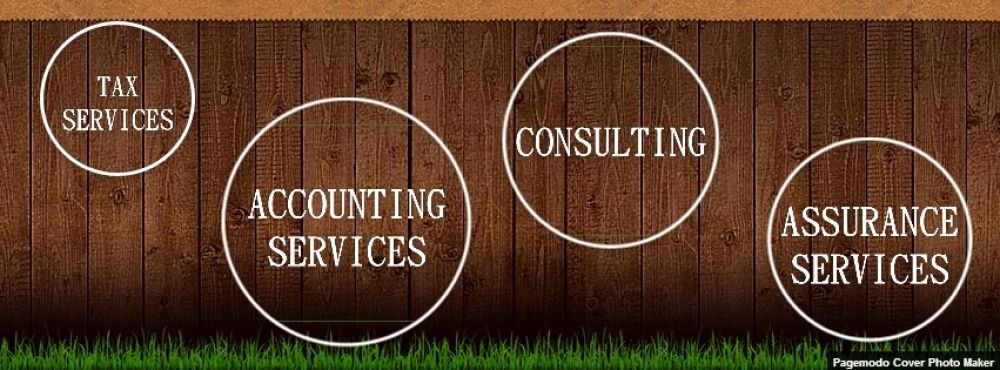The distinction between a business activity and a hobby is not a black-and-white issue but instead comes in various shades of gray, which makes it a frequent topic in tax court.
What is at stake? - At issue with the business or hobby determination is the treatment of the activity’s expenses. A for-profit business is able to deduct all of its business expenses even if the net result is a loss, whereas a not-for-profit activity (hobby) can only deduct the expenses related to that activity to the extent there is income from that activity. In other words, no loss is allowed. To further complicate the issue, the expenses of a not-for-profit activity are not netted against income like they are for a for-profit business. Instead, they must be deducted as a miscellaneous itemized deduction subject to the 2% of AGI limitation, and the income from the activity must be included in gross income. In addition, the tax code dictates the order in which the not-for-profit activity’s expenses can be used to offset its income:
- First the income is offset with otherwise deductible taxes related to the activity. These include taxes that would be deductible even if not related to the not-for-profit activity.
- Next comes all the other expenses, excluding asset depreciation.
- Then, finally, if any remaining income is left to be offset, asset depreciation can be claimed.
What is the definition of a for-profit activity? - A transaction is entered into for profit if the taxpayer intends to receive income from it overall. For a transaction involving property, the taxpayer must intend to receive income from it or to profit from disposing of it.
Profit must be the primary motive, not merely incidental. A loss deduction is possible where a secondary nonprofit motive exists, as long as the profit motive predominates. As you can see, the determination can be very subjective, and depends on the facts and circumstances of each situation. The following are factors that the IRS and the Tax Court take into consideration when making the determination:
- Does the time and effort put into the activity indicate an intention to make a profit?
- Does the taxpayer depend on income from the activity?
- If there are losses, are they due to circumstances beyond the taxpayer’s control or did they occur in the start-up phase of the business?
- Has the taxpayer changed methods of operation to improve profitability?
- Does the taxpayer or his/her advisors have the knowledge needed to carry on the activity as a successful business?
- Has the taxpayer made a profit in similar activities in the past?
- Does the activity make a profit in some years?
- Can the taxpayer expect to make a profit in the future from the appreciation of assets used in the activity?
For-profit Presumption - An activity is presumed by the IRS to be engaged in for profit for a tax year if it shows a profit for any three or more out of five consecutive years ending in that tax year (or two out of seven years, for breeding, showing, or racing of horses). A taxpayer who hasn’t engaged in an activity for more than five years (seven, for horse breeding, etc.) can elect (on Form 5213 ) to postpone the determination as to whether these presumptions apply until the close of the fourth tax year (sixth, for horse breeding, etc.) after the tax year in which the taxpayer first engages in the activity.
What the Tax Courts have had to say –
Airplane activities - A licensed airplane pilot and mechanic who worked full-time for a commercial airline also engaged in his own airplane activities such as building, improving, and flying several small airplanes. The taxpayer didn’t engage in those other airplane activities in a businesslike manner. He claimed his business plan was to build airplanes from kits and sell them for a substantial profit. Other than income tax returns, flight logs, and a business license (issued during the last month of the last year at issue), the taxpayer didn’t offer into evidence or any written documentation of his business plans or projections, payroll or other employee records, sales contracts he claimed to have entered into, or any other business records regarding his airplane activity. Activity was judged to be not-for-profit (Parker, John G., (2002) TC Memo 2002-76).
Direct marketing activities - Taxpayers’ activities weren’t engaged in for profit where the manner in which taxpayers conducted their distributorship activity (e.g., freely incurring expenses with no realistic plan for recouping them, maintaining detailed records for substantiation purposes but not for use as tools to increase the likelihood of profit, and relying only on the advice of insiders who stood to profit from taxpayers’ participation) virtually precluded any possibility of realizing a profit; they didn’t prove they had a profit motive. Although the court recognized the business reasons for the taxpayers’ recruiting of “downline” distributors (i.e., to benefit “upline” distributors under the manufacturer’s bonus program, and to earn commissions on the downline distributors’ sales), while selling products to customers and downline distributors at cost, it found the likelihood of taxpayers achieving their bonus point goals (their break-even points) was unrealistic, given that they recruited only family, friends, and acquaintances to be downline distributors. And despite four years of losses, the taxpayers had failed to change tactics to increase the likelihood of earning a profit (Lopez, Jorge N. v. Com., TC Memo 2003-142).
On the other hand, a taxpayer engaged in a similar direct marketing operation was held to be engaged in a profit-seeking activity because he kept records of income, expenses, the success rates of his mailings, and the size of his customer base. He changed methods and products to improve results. Although he didn’t have a formal business plan, the manner in which he conducted the activity evidenced an informal business plan. In addition, he didn’t derive personal pleasure from the operations, and didn’t use the business as an excuse to disguise personal travel as business trips (Dworshak, Duane A., (2004) TC Memo 2004-249).
Dog breeding - Taxpayers’ activities were engaged in for profit where the taxpayers, a husband and wife with full-time jobs, built a kennel adequate to house the dogs used in their dog-breeding activities and acquired supplies and equipment suitable for raising them. They exhibited their dogs at shows in attempts to establish a good reputation for their kennel, so that they could demand a higher price for their puppies. Furthermore, they advertised and sent cards to prospective customers to spur sales and kept records necessary to keep track of the kennel’s profitability (Larson, Ronald Dale Sr., (1991) TC Memo 1991-99).
On the other hand, a taxpayer’s activities weren’t engaged in for profit where only five of her 28 dogs generated any income, she didn’t maintain any records that tracked income and expenses attributable to particular dogs, didn’t have any business plan, didn’t do anything to develop a strategy that would make the activity profitable, and, even though the activity generated persistent losses, didn’t alter the manner in which she conducted the activity to increase the likelihood of a profit (Spranger, Melissa S., (1999) TC Memo 1999-93).
Race car driving - A taxpayer’s drag-racing activities were conducted for profit where he kept careful separate accounts and developed a business plan. He had substantial expertise in racing and considerable business knowledge, and devoted a good deal of time to it. The taxpayer had an income from other activities but not enough to enable him to engage in drag racing on a nonprofit basis. He incurred losses for seven years while developing the activity, but then acquired a sponsor and earned a small profit. Unexpected loss of the sponsor led to a return to losses. Significantly, when it became clear to the taxpayer that he wouldn’t be able to make the activity profitable, he terminated it. There was an element of personal pleasure in the activity for the taxpayer but many aspects that were unpleasant as well, such as heat and discomfort (Morrissey, John E., (2005, DC TN) TC Summary Opinion 2005-86).
A taxpayer’s activities weren’t engaged in for profit where the taxpayer was an expert on drag racing but didn’t conduct his drag-racing activities in a businesslike manneri.e., he maintained no records, had no business plan, didn’t create budgets, didn’t seek business advice, and expected the cars to appreciate in value independently of the drag-racing activities. The taxpayer derived much personal pleasure from his drag-racing activities, and his expenses and losses greatly exceeded (by 54 times) the small amount of income (only $2,150) the activities generated (Zenzen, Ronald J., (2011) TC Memo 2011-167).
Writing – A taxpayer’s activities were engaged in for profit where the taxpayer carried on his television and movie screenplay writing activity in a businesslike fashion. He hired agents to help him negotiate prices for his screenplays, had numerous contacts in the business, and devoted much time and energy to carrying on this activity (Richards, Rick, (1999) TC Memo 1999-163).
A taxpayer’s activities weren’t engaged in for profit where some aspects of the taxpayer’s article- and novel-writing activity (relating to contemporary political commentary, guns, and travel) were conducted in a businesslike manner, but other aspects weren’t. The taxpayer maintained records of his expenses and regularly researched and submitted articles and novels to various periodicals and literary agents. But, although his articles weren’t accepted for publication (during a 17-year period), he didn’t develop a strategy to get published or make changes in order to succeed. And, the taxpayer, who wasn’t a gun-testing expert, conducted his testing and incurred gun-related expenses without determining if there was any interest in the articles, and without regard to the income he could objectively earn (McCarthy, John R., (2000) TC Memo 2000-197).
If you have questions about the conduct of your activity as related to the profit motive rules, please give our office a call.














